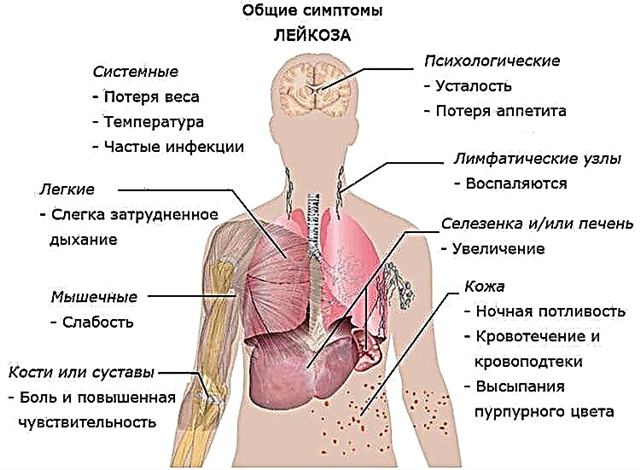Pain and tonsillitis
 Although angina is often called all diseases accompanied by painful sensations in the throat at rest and when swallowing, this is not entirely correct. The variety of inflammatory lesions of the oropharynx is quite large, and complaints of pain may be associated with pharyngitis, laryngitis, tracheitis. Tonsillitis - a synonym for the definition of "angina" - characterizes the involvement of tonsils (usually paired palatine) in the pathological process.
Although angina is often called all diseases accompanied by painful sensations in the throat at rest and when swallowing, this is not entirely correct. The variety of inflammatory lesions of the oropharynx is quite large, and complaints of pain may be associated with pharyngitis, laryngitis, tracheitis. Tonsillitis - a synonym for the definition of "angina" - characterizes the involvement of tonsils (usually paired palatine) in the pathological process.
It takes a lot of time to describe all types of tonsillitis - while most variants of the disease have features in the pathogenesis and clinical course. The simplest and most common classification allows you to divide sore throats into types such as:
- banal;
- atypical;
- arising from infectious diseases;
- arising from hematological diseases.
Should the throat hurt with any of the forms of these pathologies? This question is often the key in the primary diagnosis. And if the doctor can answer it after a visual objective examination of the affected area, the patient has to rely on his own feelings. Since angina is a serious disease that requires immediate treatment, the severity of pain is often associated with the severity of the condition. And the decision to go to a medical institution in many cases is dictated by the presence of pain, and not any other alarming symptoms.
Painful sensations when swallowing are typical for most types of tonsillitis.
It is worth remembering the likelihood of developing not only an acute, but also a chronic form - in the second case, without an exacerbation of the pathological process, pain may not be present or it is expressed moderately, becomes "habitual." With some tonsillitis, pain cannot be considered as the main and expected symptom, which, nevertheless, corresponds to the idea of their classic course.
To understand what pain syndrome can be in tonsillitis, it is advisable to describe it for each group of pathologies separately. Although, as mentioned earlier, different forms of tonsillitis have characteristics, the general features of the manifestations are similar.
Banal tonsillitis
Banal, or typical forms of tonsil pathology are:
- catarrhal;
- follicular;
- lacunar.
Also this group includes a mixed and phlegmonous form (intratonsillar abscess). Banal inflammation of the tonsils is the most common type of pathology and occurs in patients of all age categories.
Pain is present in all variants of a banal sore throat, patients describe it as sharp, intense. In the catarrhal form, it is relatively moderate - and much more pronounced in the case of the lacunar and follicular type of the disease. As a rule, it increases significantly during eating and swallowing saliva, talking. It is very difficult for patients to tolerate it without the use of pain relievers. Small children, who are unable to explain their feelings due to their age, may completely refuse to eat and drink.
The main characteristics of pain are bilateral, not spontaneous (absent or insignificant at rest). An exception is an intratonsillar abscess, which is manifested by a sharp and severe pain when swallowing on one side. The onset of symptoms is usually observed a few days after recovery from a sore throat.
With inflammation of the lingual tonsil, a sharp sore throat occurs, which radiates to the ear. The inflammatory process within the anatomical boundaries of this lymphoid formation can be combined with damage to other parts of the oropharynx, which leads to  the appearance of complaints of severe pain on both sides. The pain intensifies when swallowing, trying to push the tongue, and also when touching its root. Patients often have speech impairment and salivation.
the appearance of complaints of severe pain on both sides. The pain intensifies when swallowing, trying to push the tongue, and also when touching its root. Patients often have speech impairment and salivation.
In patients with laryngeal angina, pain appears unexpectedly, while it is very sharp and excruciating. It intensifies not only when swallowing, but also when turning the head, making it difficult to eat any, even liquid food. Often recorded in children. To relieve pain, patients assume a forced position by tilting their head forward.
Atypical forms
If the throat does not hurt with obvious angina, it is worthwhile to assume the likelihood of the patient having an atypical variant of the disease. Among atypical sore throats, there are such as:
- Ulcerative-membranous, or ulcerative-necrotic tonsillitis of Simanovsky-Plaut-Vincent.
Patients are usually not worried about pain - most often there is a feeling of a foreign body in the throat, bad breath. Soreness can appear only during the progression of the disease and, as a rule, is insignificant.
- Pharyngomycosis, fungal (mycotic) tonsillitis.
There is no pain at rest, when swallowing, it is weak, combined with a feeling of dryness and perspiration. Sick may notice it after an infectious disease, treatment for which was carried out using antibiotic therapy.
- Oropharyngeal syphilis.
In both the primary and secondary form, patients do not complain of pain when swallowing, or it bothers them to an insignificant extent. The pathological process is one-sided. If painful sensations appear, then they persist for a long time.
- Tuberculosis of the pharynx, tonsils and oral cavity.
Tuberculous lesion of the indicated localization often accompanies the primary infectious process in the lungs. The pain may appear suddenly (for example, after hypothermia), it is excruciating, sharp, accompanied by salivation. In a chronic course, it is constantly present, increases during the intake of hot and spicy food, with movements of the tongue, combined with a feeling of dryness and perspiration of the mucous membrane of the pharynx.
 The severity of objective changes in ulcerative-membranous sore throat and pharyngomycosis is often incomparable with the severity of pain.
The severity of objective changes in ulcerative-membranous sore throat and pharyngomycosis is often incomparable with the severity of pain.
A sick person suffering from ulcerative membranous or fungal tonsillopharyngitis may not seek medical help for a long time. A feature of the course is the absence of complaints of severe pain with a vivid objective picture. Against the background of moderate pain or its absence, during the examination, significant changes are found in the area of the affected tonsils.
Tonsillitis syndrome in infectious pathologies
Although angina is initially an infectious disease, it can be primary, isolated - then changes in the area of the affected tonsils are the leading objective sign. With a secondary symptomatic form, tonsillitis syndrome is distinguished - a combination of symptoms characteristic of angina in the presence of other manifestations characteristic of the underlying disease:
- measles;
- scarlet fever;
- diphtheria;
- tularemia;
- typhoid fever.
The pain syndrome coincides with that in the banal forms of angina.Patients are worried about pain of varying degrees of intensity, significantly aggravated during swallowing. At the same time, for the localized form of diphtheria, moderate pain is usually characteristic, for scarlet fever it is strong, painful, sharp.
Tularemia and typhoid fever in case of angina are accompanied by mild soreness in the throat. At the same time, objective changes in the tonsils in tularemia patients often acquire an ulcerative-destructive nature, against which the pain remains relatively bearable.
In the toxic form of diphtheria, the pain is severe, radiating to the ears from both sides.
Tonsillitis syndrome in hematological diseases
 Hematological diseases, that is, blood diseases, are pathologies in which tonsillitis is also secondary. These include:
Hematological diseases, that is, blood diseases, are pathologies in which tonsillitis is also secondary. These include:
- leukemia;
- agranulocytosis.
Pain on swallowing, which occurs in patients with leukemia, is usually combined with increased bleeding of the gums, swollen lymph nodes. Ulcers form on the surface of the tonsils, which are covered with a dirty plaque and bleed after it is removed. Pain can be temporarily relieved with local analgesics.
The pain in agranulocytosis is very strong, accompanied by rejection of necrotic tissues, a sharp bad breath, profuse salivation (salivation), symptoms of intoxication (fever, chills, headache, general malaise). Patients are forced to give up even liquid food and drink. On examination, ulcers can be seen on the surface of the tonsils. Local therapy provides only temporary and minor pain relief.
Viral tonsillitis
Sore throat can be triggered by a virus. To the main types of lesions of viral etiology include:
types of lesions of viral etiology include:
- Herpetic tonsillitis.
- Infectious mononucleosis.
In the first case, the etiological factor is the Coxsackie and ECHO viruses, in the second, the Epstein-Barr virus. The onset of both types of diseases is acute, pain appears suddenly, expressed mainly when swallowing. Patients characterize it as moderate, not too harsh, relatively tolerable.
With pain in the pharynx and tonsils of any degree of severity, treatment is required in accordance with the type of pathology and the severity of the patient's condition. However, it is necessary to consult a doctor, even if the throat does not hurt, but there is a suspicion of having a sore throat. To establish the correct diagnosis, an immediate face-to-face examination of the affected areas is required. In addition, additional diagnostic tests may be ordered.



